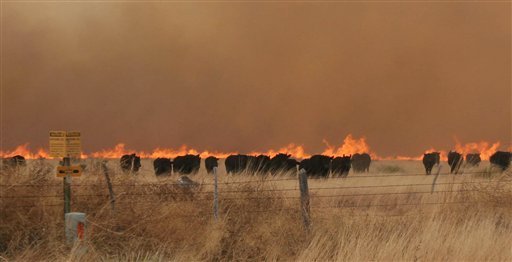Farmers Capture Carbon as Warnings of Climate Shocks Grow Louder

With the rash of wildfires that tore through millions of acres of land, towns and cities in Canada, the US, and now Australia like the wrath of God through much of 2019, the agriculture community is getting some of the finger pointing for contributing to climate change, largely viewed as the root cause of the wildfire crisis
by Ian Bickis – The Canadian Press
Canadian farmers are cultivating some sustainable farming techniques that the United Nations’ latest climate change report identified as particularly useful for an industry it concluded must make drastic changes to reduce greenhouse gas emissions.
The UN Intergovernmental Panel on Climate Change issued a report last week warning that global food supplies are at risk from climate change and land degradation.
One major conclusion was that the agricultural sector needs to rethink traditional practices, including producing less meat and more plants — which require less room to grow and produce fewer emissions — otherwise Canada will not be spared from the global impacts of food shortages and price shocks if temperatures continue to rise.
“It’s not the cattle, it’s our management that’s the problem”
Along with setting out the potentially dire consequences of inaction, the report also outlined some of the techniques that could both reduce emissions and reverse the trend.
One of the most decisively helpful options was to increase the organic content in soil, by using the land to capture carbon — a practice an increasing number of Canadian farmers employ using a variety of techniques.
Crop farmers have been working to capture carbon, which helps not just on the climate front but also for the sustainability and resilience of the soil, said David Burton, a professor in Dalhousie University’s department of plant, food and environmental sciences.
“It’s a rare example of one of the mitigation options that has really, really big positive advantages beyond greenhouse gas mitigation.”
Decades of intensity farming have started to push down the organic matter in soil that helps keep it healthy and fertile and prevents erosion, he noted.
“We’re realizing we can’t just push this thing to the max all the time, we’re going to have to start thinking about the condition of the soil.”
A key technique for farmers is to no longer till the soil, so the organic matter isn’t disturbed and can properly break down.
“That’s how soil organic matter forms, by leaving it alone,” said Burton.
No-tillage seeding has grown significantly in the past two decades, from use in less than seven per cent of cropland in 1991 to 56 per cent in 2011.
Some farmers are now trying to adopt some regenerative techniques that capture more carbon in the soil, such as growing a non-cash crop simply to add organic matter to the soil.
Farmers using the technique often plant the non-cash crop after the fall harvest, but Pankratz said that a shorter growing season has led him to plant his in the spring, in amongst his wheat crop, hoping it will continue to grow after the harvest.
The UN report and others have targeted cattle production for its methane emissions, but Canadian farmers are finding ways to use regenerative practices to help the grazing grounds capture more carbon to help offset greenhouse gas emissions from that sector.
The scientific community is still debating the benefits of regenerative cattle farming.
“It’s not the cattle, it’s our management that’s the problem. To concentrate them all into a huge feedlot, that’s an ecological disaster.”












